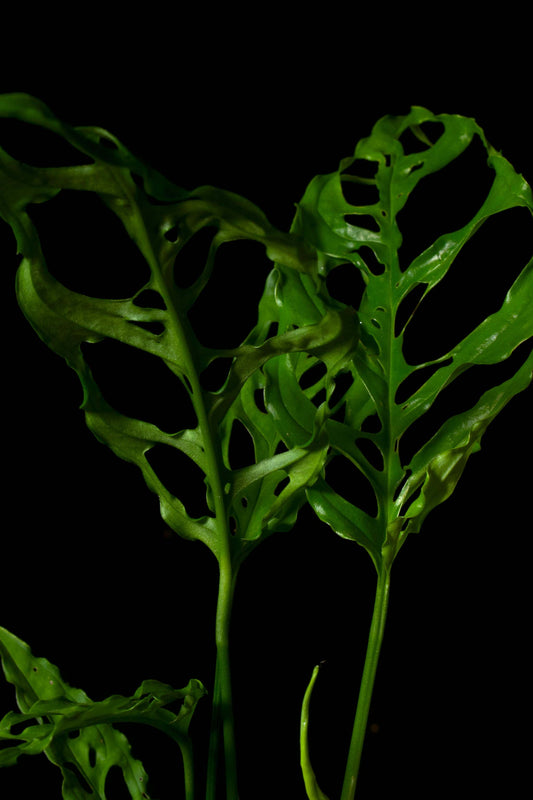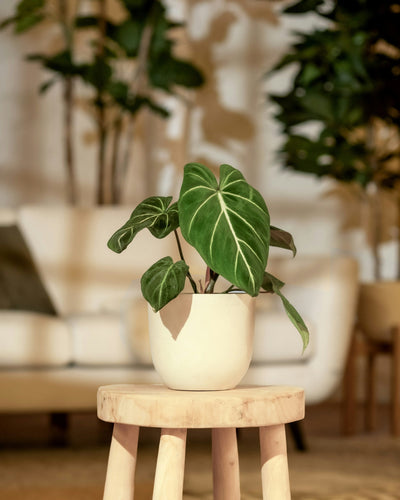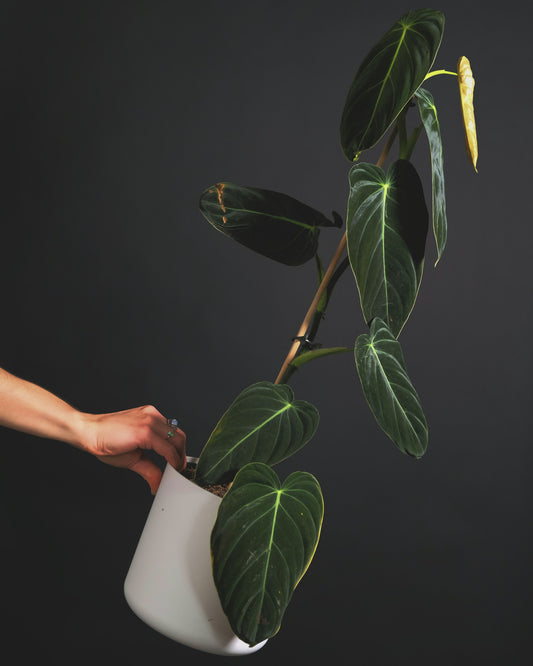Monstera deliciosa, care and information.
Monstera deliciosa is one of the most beloved houseplants, and it's not hard to see why! The plant can grow really large, lobed leaves and contribute to a tropical look at home.
An adult Monstera deliciosa with meter-long leaves in a botanical garden we usually visit in Wroclaw.
Brief botanical information about Monstera.
Monstera deliciosa is the most common species in the Monstera genus, part of the family of the nightshade plants. Monstera deliciosa is native to Southern Mexico in the states of Veracruz, Oaxaca and Chiapas, as well as neighboring Guatemala .
Monstera deliciosa climbs as an epiphyte (plants on other plants) on other trees towards the sunlight and can grow up to 10 meters high! This tropical plant can also flower and bear pineapple-flavored fruits, hence the name 'deliciosa' for the species.
Unripe fruit on a monstera deliciosa in a botanical garden in Poland.
Monstera deliciosa is a relatively easy plant to care for. However, there are a few things to consider to give your Monstera deliciosa the best conditions to thrive .
If you want to buy a monstera, you can do so here . Read on and we'll go over how to care for this exclusive houseplant.
1. How often should you water Monstera deliciosa?
When it comes to watering, Monstera deliciosa is quite forgiving, the soil should preferably dry out slightly between waterings. How quickly this happens depends on light and temperature. Usually, watering every 1–2 weeks during the summer and 2–4 weeks during the winter is enough.
How often you water also depends on the type of soil you use, well-drained soil dries out faster. As a rule, it is best to underwater rather than overwater monstera plants. If you are unsure whether it is time to water or not, wait another day! So how does soil play a role in watering? We will go over that in the next section!
2. The best soil for Monstera deliciosa.
To keep your Monstera green and big, you also need to choose a good soil. You can mix a well-drained soil with sphagnum moss or coconut fiber (instead of peat), perlite and some bark in approximately equal parts.
Such soil mimics the Monstera's natural environment by allowing the soil to remain moist at all times while the roots have small air pockets, which prevents rot.
Example of what good soil for monsteras might look like.
Can't you just use regular potting soil?
It works, but it's not good in the long run. Pure potting soil tends to become too compact over time, which can lead to poor drainage and a lack of oxygen for the roots. This can cause overwatering and, in the worst case, root rot.
It is therefore always best to improve the soil with additional materials such as perlite to achieve the correct structure and drainage.
A simple mix you can make at home is 2/3 potting soil & 1/3 perlite. If you prefer not to mix it yourself, our Aroid & orchid soil is made for aroids like monstera.
3. Why does Monstera get brown spots on its leaves?
Brown spots or completely brown leaves on your monstera can be worrisome. However, it is not always a sign of something wrong with the plant, but a natural part of growing these tropical plants indoors. However, there are some exceptions, which we will discuss below.
3.1 Do the oldest leaves at the bottom of the plant start to turn brown first?
Then overwatering is a likely cause, as these leaves receive nutrition last when the roots are damaged.
3.2 Brown leaf tips.
If the leaves become dry and brown, usually first at the tips, it may be because your Monstera deliciosa is getting too little water.
3.3 Brown spots due to too much light.
Monstera leaves are sensitive to bright sunlight, which can cause sunburn. This damage manifests as light brown, crispy spots that often appear on the leaves that receive the most light. Often the part of your houseplant that faces the light source.
3.4 Brown spots due to too little light.
Too little light can also negatively affect your Monstera deliciosa, although it does not always lead to brown spots directly . If Monstera deliciosa is exposed to too much light, the leaves will turn yellow and may eventually dry out and develop brown edges.
The leaves don't seem to be growing properly, and the new leaves are pale and weaker. Move your plant closer to a window or use grow lights, which you can read more about
here.
3.5 Small brown dots caused by pests.
If the leaves of your Monstera get small, dark brown or black dots, it could be a sign of pests, such as thrips or scale insects.
Aphids suck plant sap from the leaves and can cause discoloration. Check the undersides of the leaves and along the stems. If you see small insects or sticky fluid, aphids are likely the culprit.
4. Common pest on monstera.
Thrips are small black, oblong insects that suck the sap from the leaves of your plants. They look like the picture below when fully grown. Thrips are a very common pest on houseplants like Monstera.
Thrips have become an increasingly difficult pest to control due to resistance to our pesticides. We use beneficial insects continuously in the store and have them delivered monthly. This gives us good protection against pests and we don't have to worry when we bring in new plants.
5. What do you do with the aerial roots?
Aerial roots help monsteras gather moisture and support themselves in the forests, where Monstera deliciosa climbs trees towards the sunlight.
Give your monstera a plant support and tie up the stems with aerial roots carefully. For example, a moss stake , which will help it grow tall and get big green leaves.
6. Propagate the monstera
Propagating Monstera deliciosa is an easy and fun way to create more potted plants at home. Take cuttings by choosing a piece of the stem that has aerial roots. The cutting must have at least one node (the place where new shoots will come). Cut midway between two nodes on the stem. Leave the cutting outside for a day to allow the wounds to heal before placing it in water or moss.
You can plant it directly in the soil, but it is easier to root the cutting in water or sphagnum moss first. It is of course possible to grow monstera completely in water, but it thrives best in some form of soil.
When the roots are about 5-10 cm long, you can plant it in soil. When planting the monstera cutting from water to soil, you need to wait until the roots feel strong and stable, which usually takes 4-6 weeks.
If the cutting does not develop roots, it may be because it is not getting enough light, which is very important for root growth.
7. Replanting & pots.
Repot the monstera when the roots start to grow out of the pot. If you use transparent pots, you will see when the roots are out of place. Many of our cold-hardy plants like monstera thrive in fairly small pots compared to other plants. The reason for this is because the plant usually grows in limited space naturally.
A pot that is just a few inches larger than the root ball works best. Too large a pot can lead to overwatering , as the soil retains moisture longer than necessary when there are no or too few roots in the soil.
We recommend growing monsteras in well-drained orchid pots like these.
8. When does Monstera deliciosa get lobed leaves?
Monstera has the ability to change dramatically over time. This becomes noticeable as the plant matures, receives the right amount of light and nutrition. Younger leaves are often more heart-shaped, while older leaves develop the characteristic holes.
To get lobed leaves on your monstera, you usually just need to be patient. If the leaves get smaller and smaller with each new leaf, something is wrong. A very common mistake is not giving the plant something to lean against. To get large lobed leaves quickly, a plant support is often required.
Closing words.
If you've ever seen a well-kept Monstera with large leaves, you know why this indoor houseplant is so popular.
Do you want Buy a big houseplant or just a small cutting to start with? Browse through our cheap indoor plants and find a bargain! You can buy Monstera deliciosa online here.



















